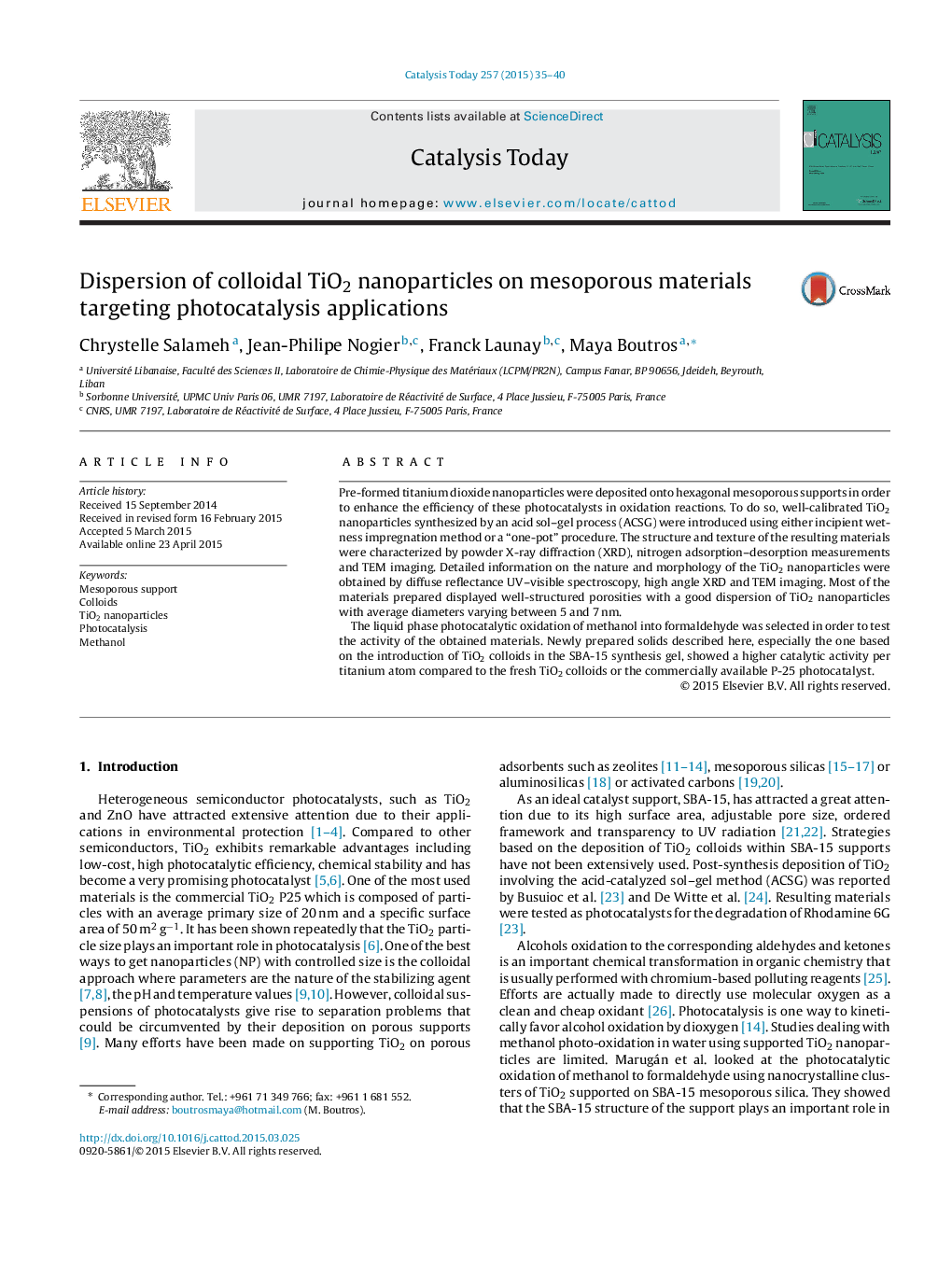| Article ID | Journal | Published Year | Pages | File Type |
|---|---|---|---|---|
| 53575 | Catalysis Today | 2015 | 6 Pages |
•TiO2 colloids (NP) were introduced into SBA-15 materials using impregnation or direct synthesis.•Resulting solids were tested in methanol to formaldehyde oxidation under UV or vis irradiation.•TiO2/(Al)-SBA-15 showed superior catalytic activity per Ti atom compared to TiO2 colloids or P25.•Incorporation of pre-formed TiO2 colloids in the SBA-15 synthesis gel led to the best catalyst.
Pre-formed titanium dioxide nanoparticles were deposited onto hexagonal mesoporous supports in order to enhance the efficiency of these photocatalysts in oxidation reactions. To do so, well-calibrated TiO2 nanoparticles synthesized by an acid sol–gel process (ACSG) were introduced using either incipient wetness impregnation method or a “one-pot” procedure. The structure and texture of the resulting materials were characterized by powder X-ray diffraction (XRD), nitrogen adsorption–desorption measurements and TEM imaging. Detailed information on the nature and morphology of the TiO2 nanoparticles were obtained by diffuse reflectance UV–visible spectroscopy, high angle XRD and TEM imaging. Most of the materials prepared displayed well-structured porosities with a good dispersion of TiO2 nanoparticles with average diameters varying between 5 and 7 nm.The liquid phase photocatalytic oxidation of methanol into formaldehyde was selected in order to test the activity of the obtained materials. Newly prepared solids described here, especially the one based on the introduction of TiO2 colloids in the SBA-15 synthesis gel, showed a higher catalytic activity per titanium atom compared to the fresh TiO2 colloids or the commercially available P-25 photocatalyst.
Graphical abstractFigure optionsDownload full-size imageDownload high-quality image (53 K)Download as PowerPoint slide
